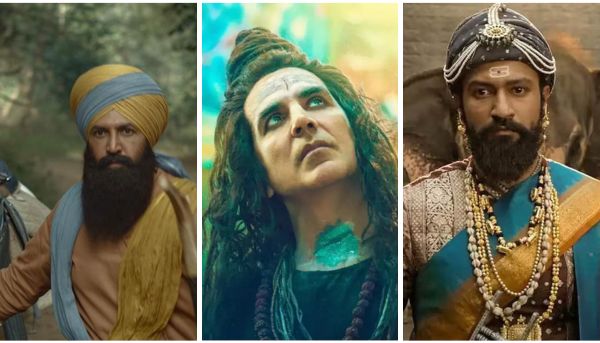
In recent years, the Hindi film industry — once considered the undisputed heart of Indian cinema — has been navigating turbulent waters. Box office performance has been inconsistent, with big-budget Bollywood films often failing to connect with audiences the way they used to. The once-reliable formula of star power and spectacle appears to be losing its hold. Yet, even amid this uncertain phase for Hindi films, another cinematic revolution is quietly taking place across the broader landscape of Indian cinema.
Regional films — be it in Tamil, Telugu, Malayalam, Kannada, or Marathi — are not just surviving the changes but are in many cases thriving. These industries, long overshadowed by Bollywood’s dominant narrative, are now taking center stage, offering stories that feel fresh, local, and emotionally grounded.
One of the key reasons for this shift lies in storytelling. As Hindi films grapple with identity crises — struggling to balance mass appeal with meaningful content — regional cinema has leaned into its roots. The focus is clear: tell stories that reflect lived experiences, honor cultural traditions, and resonate deeply with communities. Whether it’s a period epic rooted in folklore or a contemporary social drama set in a remote village, these films carry a sense of place and purpose that feels authentic and unforced.
Actors like Ajay Devgn, who have worked in both mainstream Bollywood and more grounded, story-driven films, have acknowledged this transition. There’s growing awareness even among commercial actors that audiences now value substance over style. It’s not enough to simply deliver entertainment; today’s viewer wants sincerity, relevance, and resonance.
Part of this changing landscape is due to the evolving audience. Viewers today are far more discerning, thanks in part to increased exposure to global content via OTT platforms. They’ve developed an appetite for well-crafted narratives — and they’re willing to look beyond the language barrier to find them. Subtitled films from Kerala, Andhra Pradesh, and Maharashtra are now being consumed across the country — and in some cases, globally.
Moreover, the cinematic techniques used in regional cinema have reached new heights. Directors are marrying traditional storytelling with modern filmmaking tools to create visually stunning yet emotionally rich experiences. One recent film’s gripping climax, rooted in ancient cultural rituals, didn’t just deliver a powerful emotional payoff — it reconnected the audience with a shared history, one often overlooked in glossy, formulaic storytelling.
Another reason regional cinema is flourishing is the deep engagement with local mythologies, dialects, and social structures. These films aren’t just entertaining — they educate, inform, and often challenge the status quo. They give voice to underrepresented communities and stories that seldom make it into the mainstream. There’s power in specificity, and these films are proving that the more rooted a story is, the more universally it can speak.
In contrast, many recent Hindi films have struggled to strike the right balance between tradition and modernity. There’s been an over-reliance on remakes, superficial scripts, or outdated tropes, leaving audiences disconnected. However, this challenge might also become an opportunity — a wake-up call for Bollywood to recalibrate and return to meaningful storytelling.
Some Hindi films are beginning to take note. Recent successes have come not from megastars or flashy sets, but from tight scripts, strong performances, and a return to cultural authenticity. Filmmakers who are willing to dig deeper, take creative risks, and explore India’s rich heritage are slowly earning back the audience’s trust.
The broader takeaway is clear: Indian cinema is evolving, and the power is decentralizing. No longer is the Hindi film industry the sole torchbearer of Indian cinematic excellence. In this multi-lingual, multi-cultural landscape, it’s the most grounded, culturally aware, and emotionally engaging stories that are capturing hearts — regardless of the language they’re told in.
In many ways, Indian cinema is experiencing a renaissance — not by chasing global trends, but by rediscovering its own diverse and vibrant roots.



